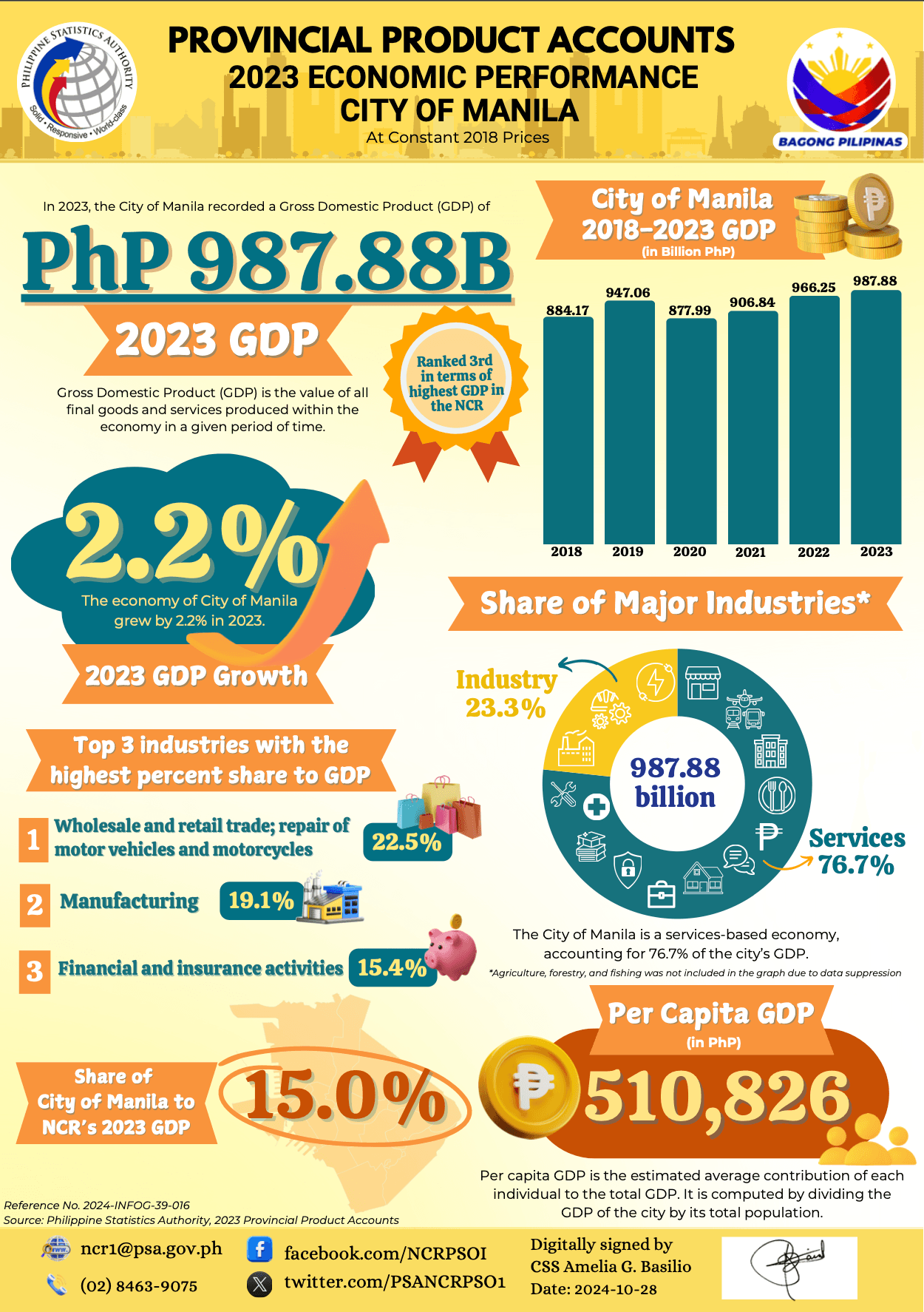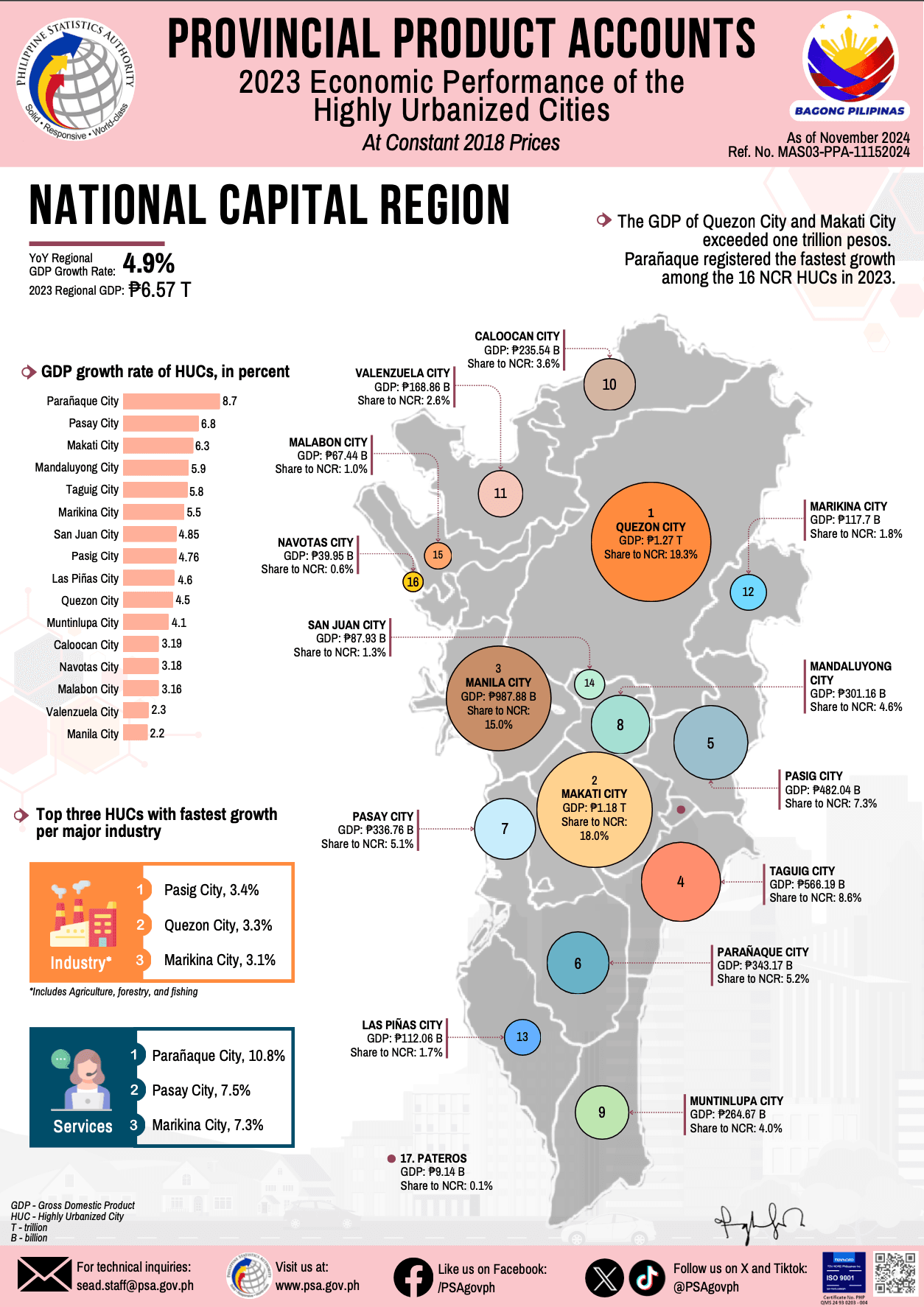
The City of Manila, under the stewardship of Mayor Honey Lacuna-Pangan, has reached an impressive milestone with nearly P1 trillion in economic output, as reflected in the latest gross domestic product (GDP) figures from the Philippine Statistics Authority (PSA).
Based on the latest 2023 GDP figures released by the PSA, Manila posted a gross domestic product of P987.88 billion, making it the the third largest economy in the entire National Capital Region (NCR).
GDP is the measure of the output of all local economic activities in a particular area.

This GDP performance follows Manila's SGLG Award from the Department of the Interior and Local Government (DILG) and Department of Trade and Industry (DTI) Competitiveness Ranking.
The mayor said the city's record economic output is the result of the strong support and cooperation among officials and workers in city hall, along with Manila’s working population and business enterprises.
“Manila achieved nearly P1 trillion in economic output despite having mostly MSMEs and traditional retail and services activities. We have a very strong MSME sector here in the capital city. This GDP output is a strong baseline and springboard for future economic growth,” Pangan said.
It was learned that Manila collected P16.9 billion in local revenues and had P4.258 billion in the national tax allotment in 2023, while the total 2023 revenues were at P22.2 billion.
“Looking forward, we aim to modernize the economy of Manila by future proofing it against other pandemics and calamities. More of our MSMEs must be able to transact online, use QR codes, deliver products and services beyond their store premises. This way, Manila’s economy will keep moving even if the movements of people are limited,” she added.
The mayor further explained that although the city's growth rate is only 2.2 percent from 2022 to 2023, this was mainly because Manila was most badly affected in the NCR by the pandemic.
"Our city economy is more dependent on people traffic, so when the lockdowns were implemented, our city economy was at a standstill, unlike some cities that had more land area and more production activities not dependent on people traffic, so they grew faster and recovered faster,” she noted.